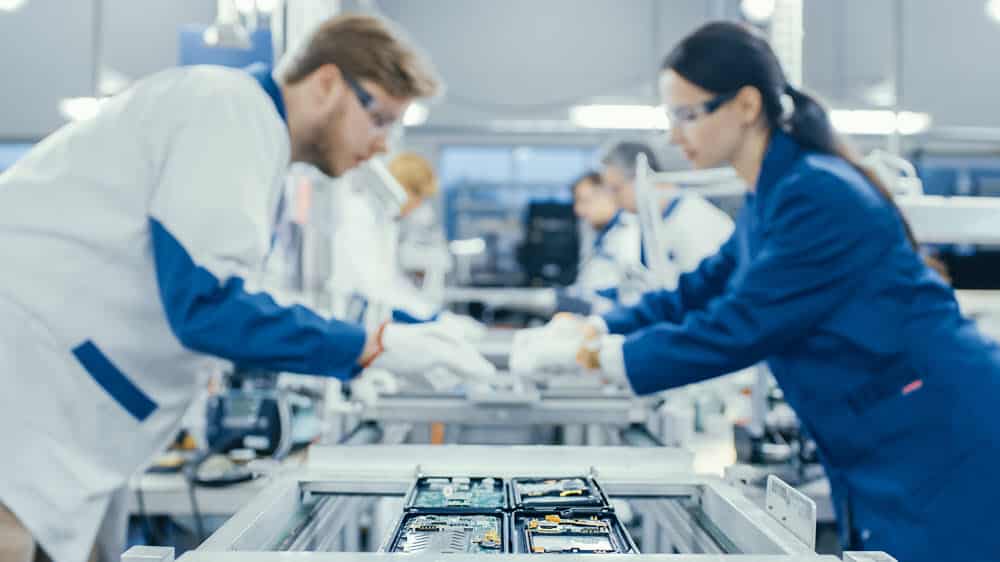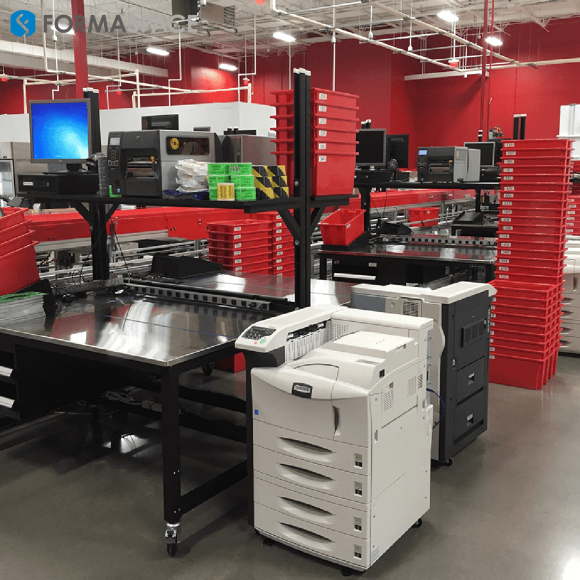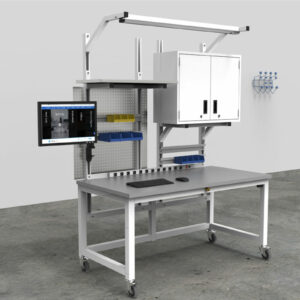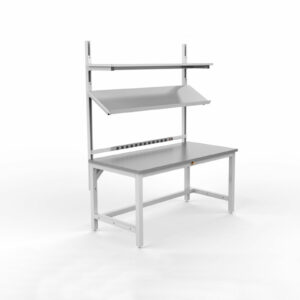The New Year, 2021, is finally here, and not a moment too soon.
The changing of the calendar marks a new start, a fresh beginning.
How can American manufacturing companies make the best of it?
The challenges facing the industry are great. US trade deficits reached an all-time high in 2020, as the Coronavirus put the economy on the back foot. And, as the American economy contracted during 2020, it’s continued to fall further behind China, which Bloomberg now estimates will take over the mantle as the world’s largest economy as soon as the year 2028.
How can we change course? According to Elon Musk, who recently overtook Amazon’s Jeff Bezos as the world’s wealthiest individual, the answer lies in increasing our investment in innovation.
Heeding Musk’s advice, we take a look at 10 areas that manufacturing companies should invest their time and resources in to achieve greater productivity and maximum return on investment.
1) Invest in People
An Educated, Innovative, and Healthy Workforce is Your Number One Asset
It takes a capable, innovative workforce to be successful in the competitive manufacturing market, which means people are the most important investment of all. The Coronavirus pandemic has only heightened the need to improve safe working conditions, but there are other important considerations to help you attract the best and brightest employees:
- Follow Covid Safety Guidelines
Use CDC’s Covid 19 safety guidance to create a plan to protect your workers from transmitting the virus; this will include improved ventilation, increased social distancing, and adding transparent shields between workers who must work close to each other.
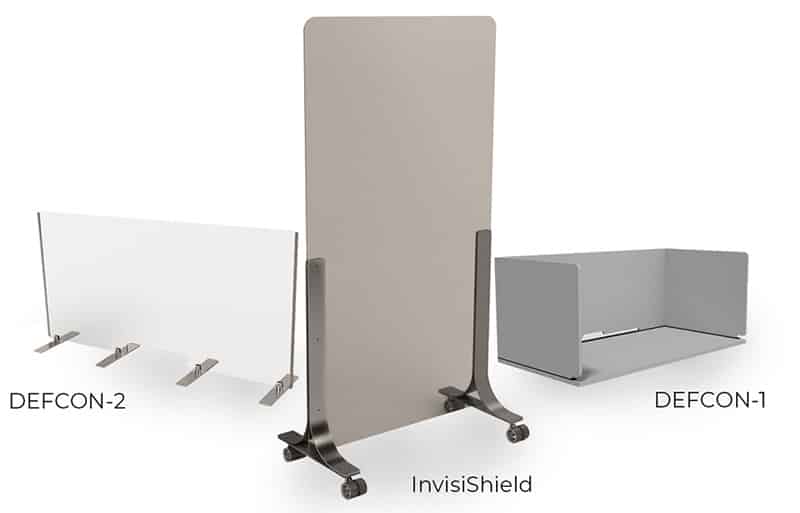
- Step-Up Accident Prevention Programs
Slips, trips, and falls (STF) and overexertion (caused by lifting heavy items incorrectly or working longer hours overhead) are among the most common causes of Musculoskeletal Disorders (MSDs). See our article How to Prevent Injuries at a Manufacturing Facility for advice on how to change work practices to avoid on-the-job injuries. - Invest in Good Ergonomics and Employee Wellness
Improper seating positions and long hours on the job can also lead to increased fatigue and injuries. Consider investing in proper ergonomic seating and workbench layouts, including work surfaces that can be raised or lowered to fit individual employees properly.
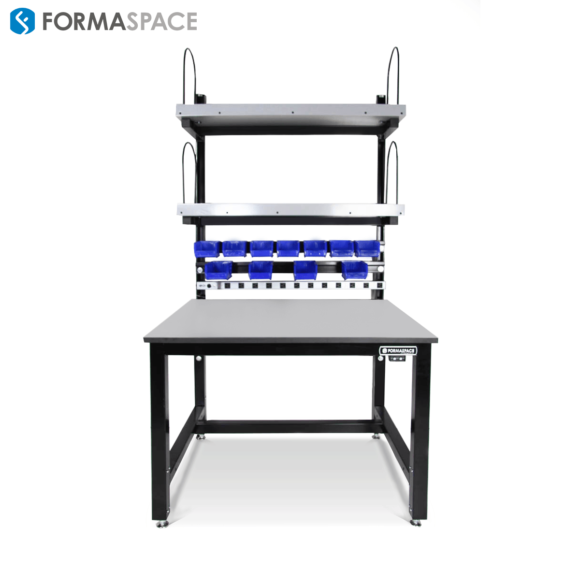
- Equal Opportunity Employee Training and Mentoring Opportunities
As older baby boomer workers retire, do you have a plan for recruiting the next generation of workers? Consider investing in local school stem programs and sponsoring internships that introduce the benefits of a manufacturing career to student populations who may not have considered how rewarding a career in manufacturing can be. - Create an Attractive Work Environment
Many of today’s high-tech manufacturing assembly facilities bear little resemblance to the dirty smokestack operations of the past. Creating a clean, organized, and attractive workspace is an important recruiting tool for attracting new talent.
2) Invest in New Product Technology
Leverage New Materials, Technologies, and Product Designs to Reduce Part Count and Improve Assembly Line Efficiency
Design for Manufacturing (DFM) has been a long-standing principle used by manufacturing engineers to improve the productivity of assembly lines – either reducing the number of parts required or simplifying their assembly or both. But recent technology innovations have supercharged DFM thanks to new design tools and product technology:
- AR/VR and AI-based CAD Tools / Manufacturing Simulation Software
Advanced augmented reality and virtual reality tools are now joined with AI-based engineering optimization tools that can help product engineers optimize product designs across multiple disciplines. (The Tesla car’s “Superbottle” that provides cooling to the electric motor and battery as well as the passenger compartment is a famous example of multidisciplinary design optimization.) Similar advances in manufacturing simulation software help industrial engineers optimize assembly workflows even before new assembly construction begins. These same technologies can also be used to train factory workers to learn new assembly line techniques.
- Integrating Microprocessors, Sensors, and Software into Product Designs
Thanks to increased microprocessor power and miniaturization of sensors, many product designs are now smaller and simpler, with fewer mechanical parts compared to previous generations, which can speed up product assembly once a manufacturing line is converted to handling electronic components assembly. Companies such as Apple are taking this further by designing and manufacturing their own microprocessor chips.
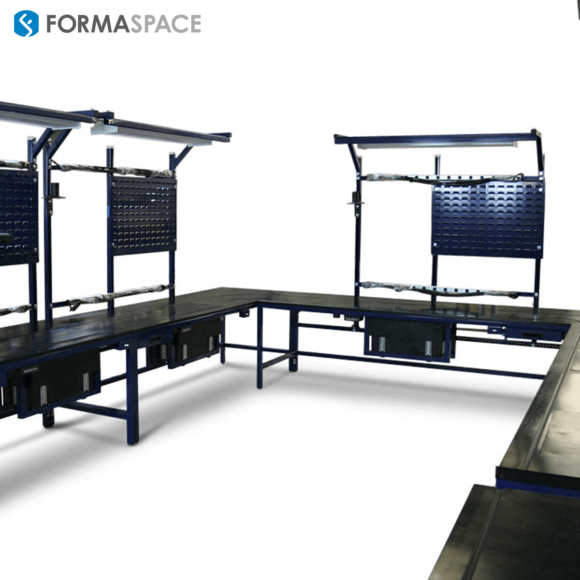
- Electrification Replaces ICE Motors, Conventional Hydraulic, and Pneumatic Systems
Electric vehicles (EVs) have far fewer parts compared to conventional internal combustion engine (ICE) models, eliminating about one-third of the components needed for assembly. Advances in electric motors and control systems may cut demand for hydraulic and pneumatic systems as well: the Boeing 787 Dreamliner has replaced conventional hydraulic-powered flight control system and pneumatic-powered pressurization and air-conditioning packs with an all-electric system, which utilizes fewer individual components and is easier to upgrade.
3) Invest in Flexible, Customized Manufacturing
Satisfy Customer Demand for Unique, Custom Products
The Coronavirus pandemic has underscored the need for manufacturers to make their factory operations more flexible to respond to sudden changes in consumer demand.
For example, many companies producing paper goods destined for the restaurant, hospitality, and entertainment markets found it difficult to repackage products in high demand, such as toilet paper, for sale to consumers spending more time at home.
The pandemic also seems to have increased consumer appetite for online shopping, which creates new opportunities for manufacturing companies:
- Offer Products Directly to Consumers
Manufacturers can take advantage of direct customer sales opportunities over the Internet if they invest in the necessary infrastructure, including efficient packing and shipping operations. - Offer Customized or Limited Run Products
Prospective customers are increasingly looking for unique, exclusive products. Savvy manufacturers are responding by offering short or one-off production runs. - Invite Customers to Design Products Online
Companies such as Formaspace allow consumers to visualize their order in 3D, allowing them to evaluate different custom features and finishes before placing the order; this information goes straight into the production system, increasing customer satisfaction while reducing communication errors.
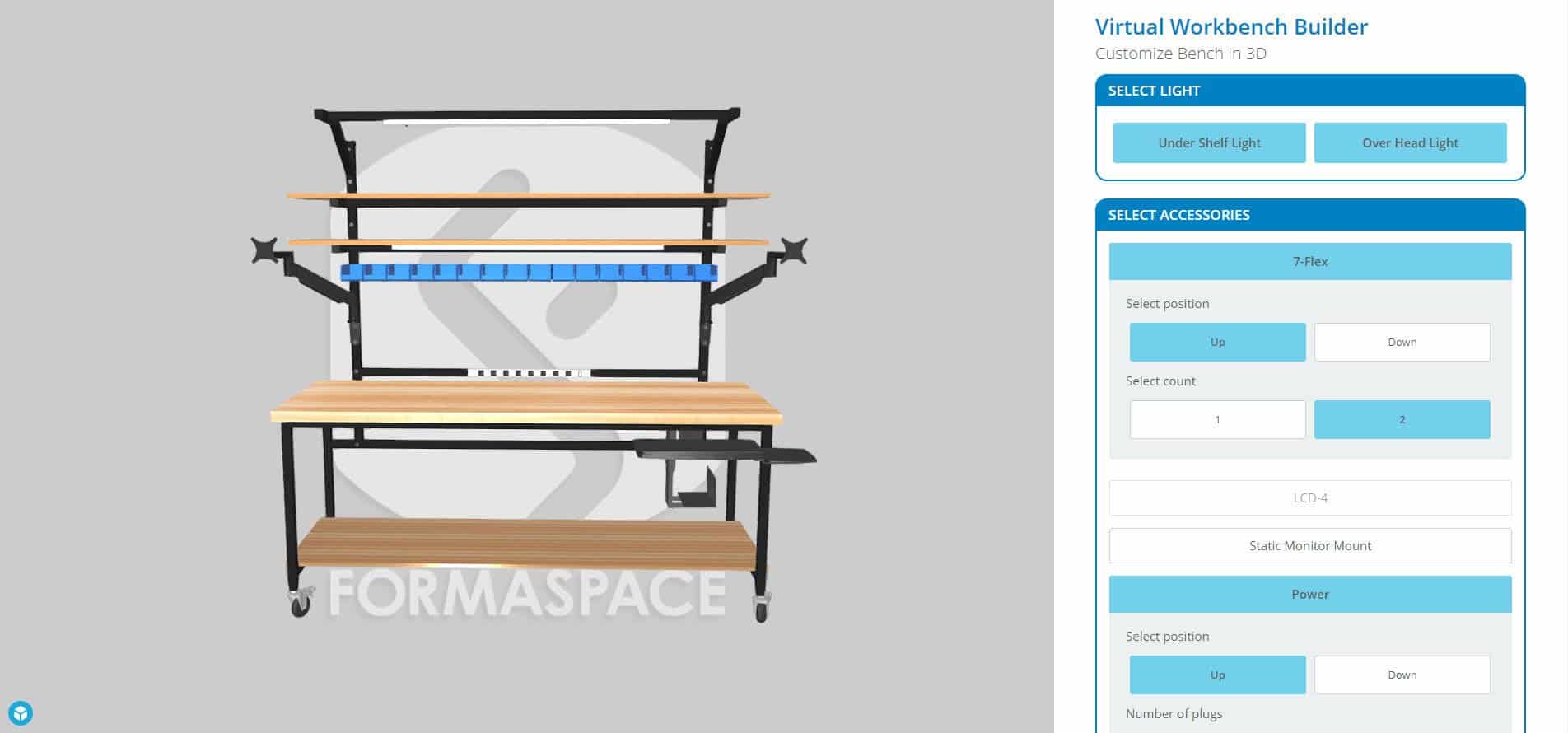
4) Invest in More Productive Material Handling, Assembly Operations, and Distribution Logistics
Optimize Raw Material Handling Operations, Streamline Assembly Station Tasks, and Increase Productivity of Packing and Shipping Stations
“A place for everything, and everything in its place.”
If your manufacturing facility isn’t meeting your productivity goals, it’s time to walk the factory floor and look at your factory operations with fresh eyes.
Is there a place for everything, and everything in its place? Are your workers spending too much time reallocating materials from one place to another? Are unused raw materials taking up valuable floor space? Do tools have clearly marked locations where they get stored at the end of the shift? Are workers reaching to lift heavy items or spending too much time working overhead without adequate back support? Are there work stoppages or quality problems due to picking errors from the parts warehouse? Is this shipping and receiving area clean and organized? Are workers in the packing and shipping areas keeping up with customer orders?
Poor material handling can not only bog down manufacturing assembly line operations, but it can also lead to worker injuries, higher inventory carrying costs, production delays, and poor quality output.
Formaspace can help. We not only manufacture custom industrial furniture solutions for efficient material handling that will improve the productivity of your assembly line, but we also offer virtual on-site consulting, such as our Rapid Plant Assessment service, to evaluate and make recommendations to improve your material handling, assembly line operations, warehouse picking, and packing and shipping operations.
5) Invest in Effective Real-Time Communications
Take Advantage of Appropriate Communications Systems to Improve Assembly Line Productivity
When it comes to real-time communications, what type of system is best for assembly line operations?
The answer: The old way may be the best way.
An explosion of new communication technologies in recent years, from online groupware systems (such as Slack) to the latest WiFi and 5G cell phone systems, may have distracted us from some of the most productive tools of all – the simple visual cues (such as Kanban cards) that help assembly lines manage processes, such as maintaining even levels of inventory, without a lot of electronic bells and whistles.
We’re not suggesting turning off cell phones or eliminating text messages from the factory floor. Nor are we downplaying the increasing importance of the latest highly integrated ERP systems, such as NetSuite, which give companies great visibility into inventory tracking and cost controls. These have an important role to play in a modern factory.
Instead, we argue that multiple communication layers can be overkill and even counterproductive, so it’s best to follow the KISS principle and keep it simple with clear visual cues informing workers on the assembly line.
6) Invest in Measurement
Consumer Demand for Quality Products Is Higher Than Ever before
While we just argued that communication systems for factory workers should be as simple and visual as possible, that’s not the case for today’s modern quality assurance systems, which depend on extensive data collection and measurement tools.
Highly sensitive optical scanners can evaluate factory output at every stage of the production process to identify incorrect parts assemblies, blemishes in fit and finish, etc. Many new product designs also have internal sensors and built-in logic that can perform self-tests to assure product quality before they leave the factory – and, thanks to IoT technology, also report problems during subsequent use in the field.
Factory operations personnel can use these real-time data inputs to point to quality problems, and data analysts can use the data mining techniques to identify emerging quality trends, both good and bad, which can be incorporated into running design changes for next-generation product designs.
7) Invest in Blended Worker Automation
Blend New Automation Systems with Human Workers
Manufacturing companies are increasingly investing in new automation systems, e.g. robots, to perform many of the factory assembly line tasks once done by (human) hands.
Robots have proven themselves especially adept at performing potentially dangerous operations, such as spraying paint in the paint booth, high-speed welding, handling heavy objects or working in awkward positions, handling molten metal in steel mills, or performing maintenance in nuclear power plants.
But robots are also proving to be adept at performing highly repetitive tasks, such as zig zagging through the warehouse to perform picking operations or (as mentioned in the previous section) performing quality insurance inspections.
The challenge for assembly line operators is to find the right balance in deciding to invest in robotic systems to achieve a positive Return on Investment (ROI). In some cases, the Coronavirus has made the decision easier as robots can work in close proximity without fear of catching the virus. The newest generation of Co-Bots (e.g. robots designed to work safely side-by-side with human workers) may prove to be a compelling investment for factory owners, particularly if they can be programmed easily to adapt to different tasks and if workers accept the idea of working with them.
8) Invest in a Community of Local Suppliers
Buy Local to Shorten Supply Chain Lines, Reduce Risk, and Increase Visibility into Supplier Operations
Are you familiar with the terms chaebol, keiretsu, or mittelstand?
These are, respectively, the Korean, Japanese, and German terms for a network of interconnected suppliers within each of these countries.
In these countries, purchasers often place a high priority on sourcing products and raw materials from these networks, in part either due to long-standing supply contracts, partial joint ownership in the supplier, or a preference to support local suppliers to make sure they stay in business in the future.
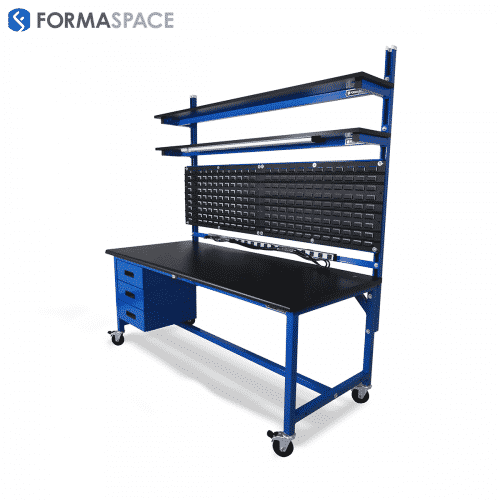
We’re not blind to accusations, particularly in the case of chaebol and keiretsu, that this can lead to monopolistic or other bad business practices, but, rather here, we are focused on the idea that for any manufacturing operation to be successful in the US, they need to support and help nurture a domestic supplier infrastructure.
Otherwise, as we have recently seen during the height of the Coronavirus pandemic – when foreign supplies were suddenly cut off and we were unable to make urgently needed products such as face masks here at home – we need a more self-sufficient domestic manufacturing industry that is not so reliant on overseas production.
9) Invest in Sustainability
Satisfy Growing Customer Demand for Greener Products and More Sustainable Business Practices
Earlier, we talked about the importance of Design for Manufacturing (DFM). Unfortunately, this approach, which can make manufacturing more efficient, can have downsides for consumers wanting to repair products they have purchased rather than throw them out to collect in a landfill.
In some extreme cases, such as John Deere tractors, consumers have reacted with legal action to purchase agreements that prevent them from making repairs on their own, an action that’s come to be known as the Right to Repair movement.
Businesses need to respond to increased consumer demand for sustainable products and environmental stewardship. If they don’t, customers will increasingly vote with their dollars to choose another company’s products.
One suggestion for companies looking to improve their design for maintainability (or design for repair, as it is variously known) is to send product engineers to work alongside field maintenance technicians to learn first-hand how the products get serviced in the field.
10) Invest in Good Governance and a Level Playing Field
Now, More than Ever, Our Economy Is Dependent on Good Government and Ethical Business Practices
It’s been a long-standing belief that American workers can successfully compete with the rest of the world as long as we have a level playing field.
And indeed, America should top the list of places to consider opening a new factory assembly line, considering the extensive advantages we traditionally have enjoyed, including abundant and inexpensive energy, large amounts of available land, relatively low taxes, ethical business practices, and a stable government.
Unfortunately, we have to call into question the last two items on the list.
Like most Americans, executives and industry leaders at major companies and business trade organizations, including IBM, CitiBank, and the US Chamber of Commerce, reacted in horror to the rioters attacking our nation’s Capitol building during a joint session of Congress on January 6.
National Association of Manufacturers President and CEO Jay Timmons issued a strongly worded condemnation, saying, “This is not the vision of America that manufacturers believe in and work so hard to defend. Across America today, millions of manufacturing workers are helping our nation fight the deadly pandemic that has already taken hundreds of thousands of lives. We are trying to rebuild an economy and save and rebuild lives. But none of that will matter if our leaders refuse to fend off this attack on America and our democracy—because our very system of government, which underpins our very way of life, will crumble.”
Without good government and good citizenship, we lose everything.
In closing, manufacturing companies also need to keep their own house in order. The events in Washington have overshadowed a grim chapter in aviation history, where Boeing has settled with the Justice Department for misleading FAA regulators on the safety of its 737 Max airplane, by paying a record $2.5 billion settlement.
In light of these events, manufacturing companies need to invest more in efforts to support good government, good citizenship, and ethical business practices.
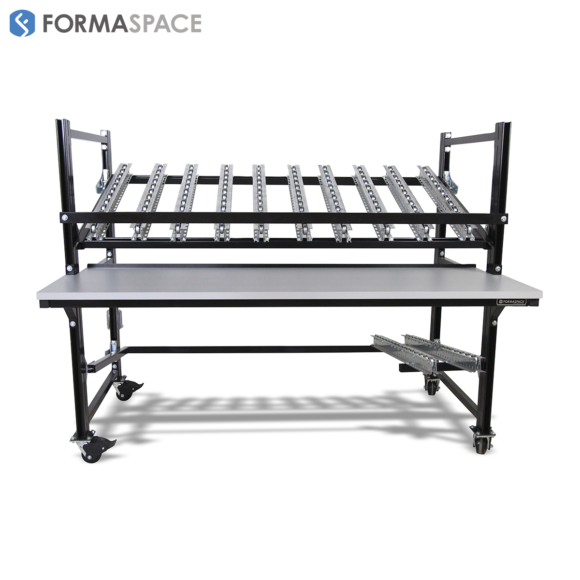
Formaspace Is Your Assembly Line Efficiency Expert
If you can imagine it, we can build it – here at our factory headquarters in Austin, Texas.
Whether you’re building a new assembly line or reconfiguring your manufacturing facility, clean room operations, laboratory infrastructure, packing, and shipping departments, we can help provide you with efficient solutions to make your business more productive.
Find out why major companies such as Space X, Toyota, Dell Computer, and more choose custom Formaspace industrial furniture installations for their facilities.
Contact your Formaspace Design Consultant today.


